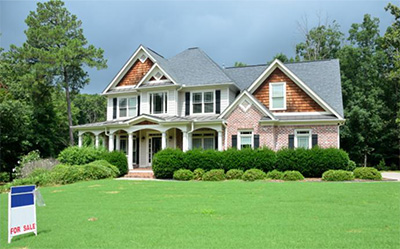Legal & Tax Updates [Back to list]
BIR Clarifies the Applicable Taxes Due on Sale of Real Property Considered as Ordinary Assets of the Seller
On 03 October 2023, the Bureau of Internal Revenue (“BIR”) issued Revenue Memorandum Circular No. 99-2023 clarifying the application of tax laws and regulations pertaining to transfers/sales of real properties classified as “ordinary assets” across all offices processing electronic Certificate Authorizing Registration.
Determination of Real Property as an Ordinary Asset
In order to determine if the real property subject of sale is an “ordinary asset” on the part of the seller, Revenue Regulations (“RR”) No. 7-2003 provides that real properties considered “ordinary asset” shall refer to all “real properties” specifically excluded from the definition of capital assets under Section 39(A)(l) of the National Internal Revenue Code (“NIRC”) of 1997, as amended. These include the following:
- Stock in trade of a taxpayer or other real property of a kind which would properly be included in the inventory of the taxpayer if on hand at the close of the taxable year; or
- Real property held by the taxpayer primarily for sale to customers in the ordinary course of his trade or business; or
- Real property used in trade or business (i.e., buildings and/or improvements) of a character which is subject to the allowance for depreciation provided under Sec. 34(F) of the NIRC of 1997, as amended; or
- Real properties used in trade or business of the taxpayer; or
- In the case of banks, real properties acquired through foreclosure sale.
Forfeited Properties Sold through Public Auction
The BIR also clarified that real properties seized by government in the exercise of its regulatory functions that were eventually sold through public auction are not considered “ordinary asset.” Although it is part of the “inventory” of the government primarily held for sale, the real property in the hands of the government shall not be considered “stock in trade/inventory” in the ordinary course of trade or business.
Issuance of Sales Invoice
Only sellers of real properties classified as “ordinary assets” are required to issue Sales Invoice pursuant to Section 237 of the NIRC, as amended. However, in case of a value added tax (“VAT”)-registered taxpayer who is engaged solely in sale of service, as a consequence thereof, has only Authority to Print for Official Receipt (“OR”), the issuance of an OR covering the sale of its real property used in trade or business is permitted as the sale is merely incidental to its regular business operations.
If the seller’s registered business is “real estate business,” the sales shall form part of its gross sales. Otherwise, the sale of real property, though covered by a sales invoice, shall not form part of the gross sales, but the gain on the sale of such real property shall be declared as other taxable income which shall be declared in the seller’s income tax return. The gain is computed by deducting the book value of the real property from the selling price indicated in the sales invoice. Any creditable tax withheld by the purchaser shall be claimed as tax credit.
The copy of BIR Form No. 1606 with proof of payment of the Creditable Withholding Tax shall be attached to the income tax return where the sales were declared by the seller.
The Requisite Tax Returns to be Filed
If the real property is considered as “ordinary asset” of the transferor/seller, the tax returns to be filed are: (i) BIR Form No. 1606 for the remittance of expanded withholding tax on the purchase of real property; and (ii) BIR Form No. 2000-OT for the declaration and payment of the documentary stamp tax due on the transfer/sale of real property.
Real Property Classified as “Ordinary Asset” Subject to VAT
Generally, sales of real property classified as “ordinary assets” are subject to VAT. However, the following are instances when the sales of real property classified as “ordinary assets” are not subject to VAT:
- When the real property is used in business by a “Non-VAT Registered Person,” whose transactions are under Section 109(1)(A) to (BB) of the Tax Code, as amended; or
- When the real property subject of sale/transfer falls under Section 109 (P) of the NIRC, as amended (i.e., sale of real property utilized for socialized housing as defined by Republic Act No. 7279, as amended; sale of house and lot and other residential dwellings with the selling price of not more than PHP3,199,200.00: provided that every 3 years thereafter, the amount shall be adjusted to its present value using the Consumer Price Index as published by the Philippine Statistics Authority.
If the sale of real property is subject to VAT, Section 106 of the NIRC, as amended provides that the 12% VAT shall be based on the “gross selling price or gross value in money of the goods or properties sold, bartered or exchanged.” Section 4.106-4 of RR No. 16-2005, as amended, however, states that in the case of sale of real property subject to VAT, the “gross selling price” shall mean the consideration stated in the sales document or the fair market value, whichever is higher. The term “fair market value” shall mean whichever is the higher of (i) fair market value as determined by the Commissioner (zonal vale), or (ii) the fair market value as shown in the schedules of values in the Provincial or City Assessors (Real Property Tax Declaration).
